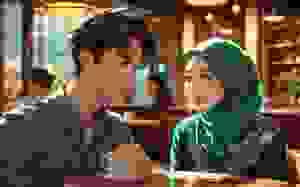Reading Like A Translator Insights By Damion Searls
Reading like a translator opens up a unique perspective on literature, transforming the act of reading into an intricate dance between comprehension and creation. Acclaimed translator Damion Searls emphasizes that this approach mimics the translation process, where understanding sentence structure and linguistic nuances significantly impacts the final output. By immersing oneself in the text, readers can appreciate the subtleties of literary translation and the techniques that transpire in the background. Searls highlights the importance of choosing words not merely out of personal preference but as a reaction shaped by the original material, which ultimately forms the essence of translation. Engaging with the text in this manner helps readers grasp the deeper meanings embedded within, fostering a richer understanding of the language and culture of the work they explore.
Adopting a mindset akin to that of a translator enhances one’s reading experience beyond mere enjoyment. This literary approach entails reading deeply, where close attention is paid to the intricate details and frameworks that underpin the text. Through this lens, readers become akin to interpreters, dissecting not just the content but also the stylistic decisions made by the author. Emphasizing the interplay between reading strategies and translation techniques allows one to appreciate the depth of expression found in different languages. In essence, this perspective enriches the reader’s engagement and invites a transformative exploration of written work.
Understanding the Translation Process
The translation process is a meticulous journey that involves not just the transfer of words from one language to another but also the preservation of meaning, style, and cultural nuances. Translators, like Damion Searls, emphasize that effective translation is rooted in a deep understanding of both the source and target languages. This means recognizing linguistic structures, idiomatic expressions, and cultural references that are inherent to the original text. It’s an art form that combines linguistic proficiency with a keen insight into literary translation techniques, allowing translators to create works that resonate with new audiences.
Searls highlights the importance of close reading when it comes to translating texts, stating that understanding the nuances of sentence structure can significantly influence the final product. A translator must often grapple with the choices made by the original author while seeking to convey those same intentions in a way that feels natural to readers in another language. Each decision in the translation process can impact how the text is perceived, thus reinforcing the notion that translation is as much about interpretation as it is about language.
Reading Like a Translator
To read like a translator is to engage with texts in a unique way, one that transcends mere comprehension and journeys into interpretation. Damion Searls describes this approach as an essential skill for any translator, arguing that it allows one to dissect a text’s linguistic elements consciously. This process goes beyond recognizing words; it involves identifying stylistic choices made by the author and understanding how these choices contribute to the overall narrative. In his own translations, Searls strives to capture the essence of the author’s voice, ensuring that the nuances of the original text are faithfully represented.
By practicing the art of reading like a translator, individuals can hone their skills to recognize patterns, cultural references, and emotional undertones that may not be immediately apparent. When translators immerse themselves deeply in the text, they develop a mental toolkit of translating techniques that allow them to create translations that are not just literal but also resonate with the target audience. This skill enhances the translation process, enabling translators to produce texts that maintain the integrity of the original while still feeling organic in the new language.
The Role of Linguistic Structure in Literary Translation
Understanding linguistic structure is crucial in literary translation, as it aids translators in conveying the subtleties of the source material. This includes knowledge of grammar, syntax, and semantics that can significantly influence the tone and style of a translated work. For instance, Searls points out that certain constructions that may be common in German or other languages might not have direct equivalents in English. As a result, a translator must navigate these differences carefully to ensure that the translated text remains true to the original while also being accessible and fluid in the target language.
Moreover, the recognition of linguistic structures allows translators to capture the author’s intent more accurately. Searls’ example of Uwe Johnson’s specific phrasing illustrates how every aspect of language conveys a particular meaning or style. By maintaining these elements in the translation, a translator ensures that the final product reflects both the author’s voice and the original context. This intricate dance between fidelity to the source material and the natural flow of the target text is what makes a literary translation resonate and come alive for its readers.
Translating Techniques for Accurate Expression
Translating techniques are essential for ensuring that meanings, emotions, and cultural references are accurately conveyed to the target audience. Searls emphasizes the necessity of developing various strategies, such as paraphrasing, adapting idioms, and employing cultural equivalents, to effectively communicate the essence of the source material. This adaptive approach enables translators to choose words and phrases that not only reflect the meaning but also fit the context and emotional weight of the original text. Such techniques are pivotal in producing translations that are not merely literal but also culturally appropriate.
Furthermore, the use of translating techniques often requires a delicate balance between maintaining the author’s original intent and creating a fluid, readable text in the target language. For instance, Searls’ work on Fosse’s novels involved making strategic choices about the translation of specific titles and phrases to prevent disrupting the story’s flow in English. By using translating techniques judiciously, translators like Searls can introduce readers to new worlds while preserving the integrity and artistry originally crafted by the author.
The Philosophy Behind Translation
The philosophy of translation delves into the deeper implications of what it means to translate, including the ethical and existential aspects. Drawing from thinkers like Maurice Merleau-Ponty, Searls highlights the intrinsic connection between language, perception, and the act of translating. This philosophical approach asserts that translation is not just a mechanical task but a profound engagement with the text that reflects the translator’s interpretation of meaning and intention. By understanding translation through a philosophical lens, one can appreciate the nuances and complexities that influence how language shapes thought and experience.
Additionally, the act of translating invites a reflection on the relationship between language and reality. Translators, according to Searls, are tasked with embodying a text’s essence and recreating it in a new linguistic environment. This philosophical inquiry prompts a consideration of how different languages express the same ideas and how culture shapes our perceptions. As such, translators must navigate these complexities, making philosophical considerations a crucial part of their work.
Striking a Balance in Translation
Striking a balance in translation requires a continuous interplay between fidelity to the source text and creativity in the target language. Searls articulates that while it is important to remain true to the original author, effectively translating their work involves stepping into a role that demands not only linguistic skills but also an understanding of cultural and contextual nuances. This duality is at the heart of the translation process, where the translator must engage in a dialog with the text that informs their choices and practices.
For example, Searls’ approach often involves engaging with the author where possible, to better understand their intentions. This collaborative aspect enables a more authentic representation of the original work. The balance between preserving the original voice and adapting it for a new audience is an art in itself, and successful translators develop this skill through both practice and introspection.
Cultivating Translation Skills Through Practice
Cultivating translation skills is fundamentally about practice and exposure to different linguistic styles and cultural contexts. Searls encourages aspiring translators to engage with texts actively and consistently to enhance their reading and translating techniques. This involves not only reading in the source language but also immersing oneself in various literary works to understand different narrative styles, idiomatic expressions, and cultural meanings.
Furthermore, participating in workshops or discussions with other translators, like the session Searls conducted with Ph.D. students, can provide valuable insights into the translation process. Such environments allow for exchange, critique, and collaboration, which are all beneficial for refining one’s skills. Ultimately, developing as a translator is a continuous journey shaped by an openness to learning and a deep engagement with the linguistic and cultural fabric of the languages involved.
The Impact of Translation on Culture
Translation plays a pivotal role in bridging cultural divides, enabling the exchange of ideas, stories, and traditions across linguistic boundaries. Through translation, writers like Searls make it possible for readers to partake in diverse literary experiences that would otherwise remain inaccessible. This cultural exchange enriches societies by fostering understanding and appreciation of different perspectives and narratives.
Moreover, as Searls illustrates through his work, careful translation can preserve linguistic nuances that are essential to a culture’s identity. By capturing the unique characteristics of the source language, translators help maintain the authenticity and richness of the original work in a new linguistic context. This respectful approach to translation contributes to a more nuanced global literary landscape, where a multitude of voices are heard and celebrated.
The Evolving Nature of the Translation Field
The field of translation is continually evolving, influenced by technological advancements, shifts in cultural dynamics, and expanding global interconnectedness. With tools like machine translation and collaborative platforms, contemporary translators face new challenges and opportunities that reshape the way translations are approached. Searls acknowledges that, while technology may assist in the translation process, the nuanced understanding of language and culture that human translators provide remains irreplaceable.
This evolving nature also necessitates that translators stay informed about changes in linguistic structures, social contexts, and literary trends. As languages evolve, so too do techniques and approaches to translation, requiring ongoing learning and adaptation. For those in the field, embracing this evolution is essential to remain relevant and effective in a landscape that is increasingly interconnected and diverse.
Frequently Asked Questions
What does it mean to read like a translator?
Reading like a translator involves engaging with the text at a deep level, focusing on linguistic structure and the subtle nuances of the original language. This approach allows translators to capture the essence of the author’s voice and style, ensuring that the translation resonates with readers in the target language.
How can understanding the translation process improve my reading skills?
Understanding the translation process enhances reading skills by fostering a closer reading strategy. Readers can learn to identify key linguistic elements, cultural contexts, and stylistic choices that inform the text, thus enriching their overall reading experience and comprehension.
What techniques do literary translators use to convey meaning?
Literary translators utilize various techniques such as maintaining sentence structure, preserving cultural references, and using idiomatic expressions. By carefully analyzing these elements, they can create translations that are both faithful to the original text and fluid for the target audience.
Why is linguistic structure important in reading like a translator?
Linguistic structure is crucial because it shapes how meaning is conveyed in any language. Translators must understand these structures to effectively convey the author’s intent and stylistic nuances, which ultimately enhances the quality of the translation.
How does Damion Searls approach the translation process?
Damion Searls approaches the translation process through slow, precise drafting, often revising without referring back to the source material extensively. This method allows him to focus on achieving a natural flow in English, while staying true to the author’s original vision.
What is the relationship between reading and translating, according to Damion Searls?
According to Damion Searls, reading and translating are intertwined activities. Effective translation stems from a thorough reading experience, where the translator deciphers linguistic elements and interprets the text’s meaning to create an authentic and engaging version for readers in another language.
How do translating techniques influence the final translation?
Translating techniques, such as word choice, sentence construction, and cultural adaptation, significantly affect the final translation. These techniques ensure that the translation captures the original work’s spirit while making it accessible and relatable to the target audience.
Can anyone read like a translator, or is it an exclusive skill?
Anyone can develop the ability to read like a translator through practice and exposure to different languages and texts. While expertise in the source language is beneficial, diverse experiences and perspectives can enhance one’s ability to engage critically with texts and contribute to translation.
What can readers learn from translating literary texts?
Readers can learn to appreciate the depth of linguistic nuances, cultural references, and stylistic elements in literature. Translating literary texts fosters a greater understanding of the interplay between languages and enhances overall reading comprehension and critical thinking.
Why is there no ‘perfect’ translation according to translation philosophy?
There is no ‘perfect’ translation because each language has unique structures, idioms, and connotations that can lead to different interpretations. As Damion Searls emphasizes, translation is a subjective art, akin to personal responses to literature, where multiple valid versions coexist.
Key Point
Details
Translation Process
Translating is a reading and writing experience combined, where the translator interprets the text instead of just converting words.
Subjectivity in Translation
There are no perfect translations; interpretations vary based on reading experiences and the unique style of different authors.
Close Reading Skills
Translators must engage deeply with the original language’s structure to convey the author’s intent accurately.
Philosophy of Translation
Drawing from philosophers, Searls emphasizes that the translator must recognize the connection between language and meaning.
Intuition in Revising
A successful translation often comes from intuitive revisions rather than strict adherence to the source material.
Summary
Reading like a translator involves understanding the nuances that come with interpreting texts. Damion Searls emphasizes the combination of reading and writing within the translation process, highlighting that translation is more about conveying meaning than simply switching languages. The act of translating requires a deep engagement with the source material, allowing the translator to reflect the author’s voice and intent. Ultimately, embracing the subjective nature of translation leads to more authentic and relatable interpretations for readers.
The post Reading Like a Translator: Insights by Damion Searls appeared first on tv3malaysia.net.
Artikel ini hanyalah simpanan cache dari url asal penulis yang berkebarangkalian sudah terlalu lama atau sudah dibuang :
http://tv3malaysia.net/culture/reading-like-a-translator-insights-by-damion-searls
 PING BABAB : Raksasa Aggregator Malaysia
PING BABAB : Raksasa Aggregator Malaysia



























